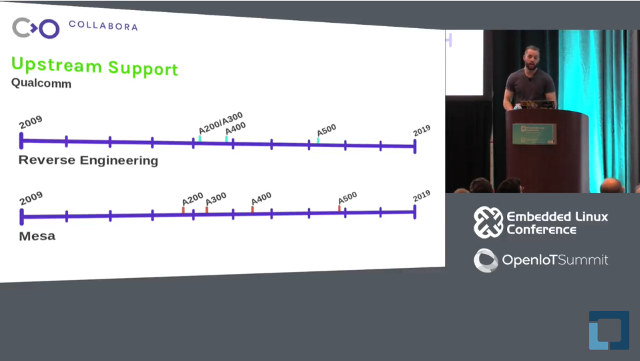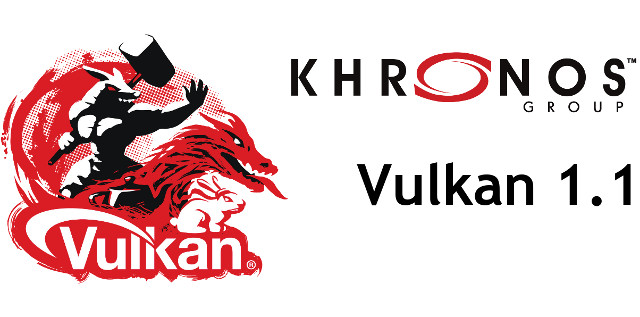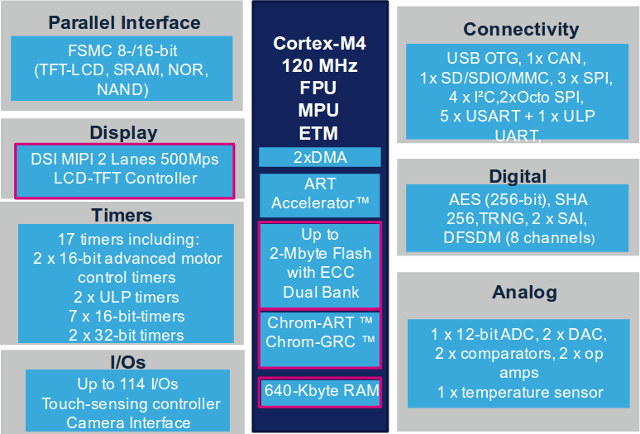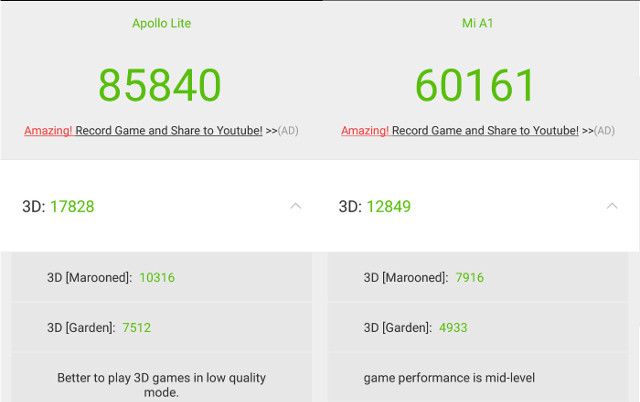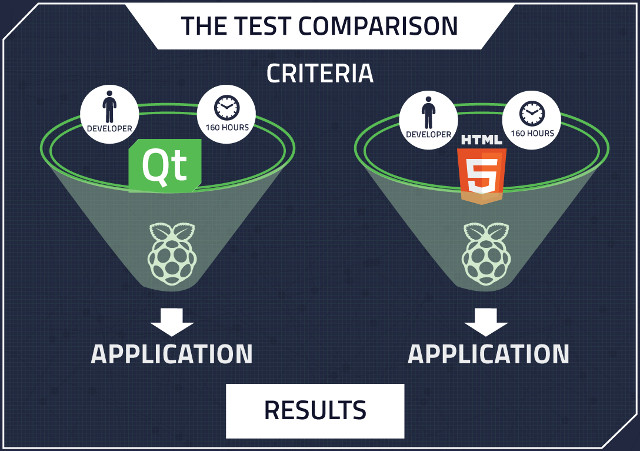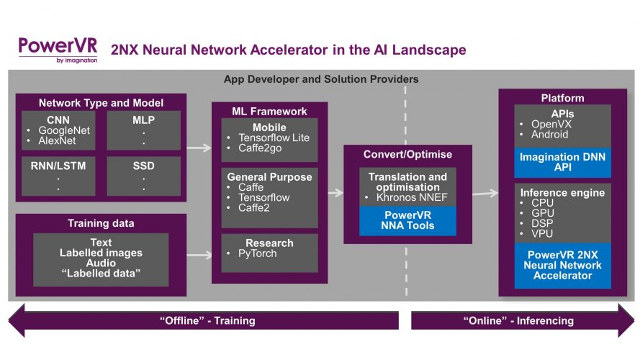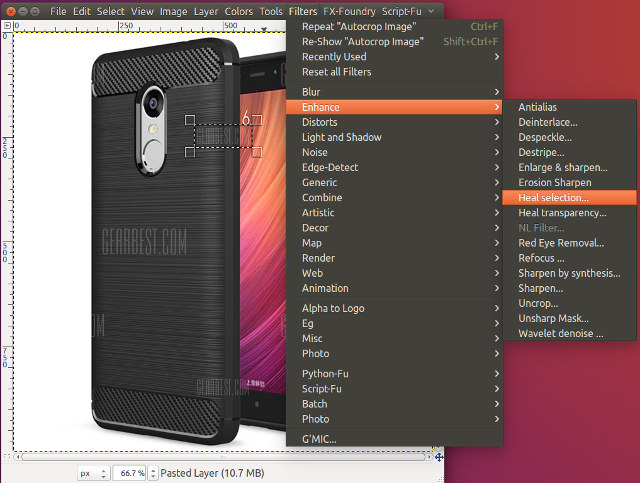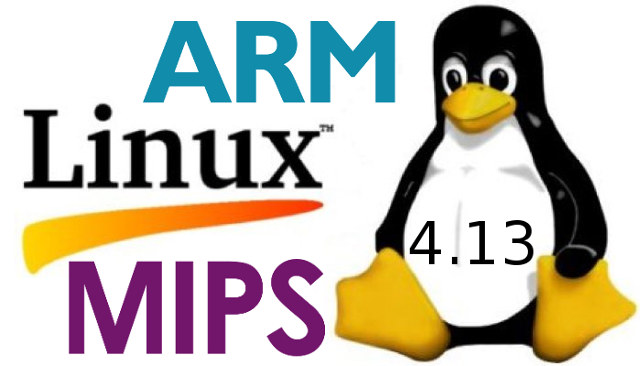The Embedded Linux Confernce is on-going, and the Linux Foundation has been uploading videos about talks in a timely manner on YouTube. I checked out at RISC-V keynote yesterday, but today I’ve watched a talk by Robert Foss (his real name, not related to FOSS) from Collabora entitled “Progress in the Embedded GPU Ecosystem”, where he discusses open source software support in Linux/Mesa from companies and reverse-engineering support. The first part deals with the history of embedded GPU support, especially when it comes to company support. Intel was the first and offers very good support for their drivers, following by AMD who also is a good citizen. NVIDIA has the Nouveau driver but they did not really backed it up, and Tegra support is apparently sponsored by an aircraft supplier. Other companies have been slower to help, but Qualcomm has made progress since 2015 and now support all their hardware, […]
Vulkan 1.1 and SPIR-V 1.3 Specifications Released
The Khronos Group released Vulkan 1.0 specifications in 2015 as a successor of OpenGL ES, compatible with OpenGL ES 3.1 or greater capable GPU, and taking less CPU resources thank to – for instance – better use of multi-core processors with support for multiple command buffers that can be created in parallel. A year later, we saw Vulkan efficiency in a demo, since then most vendors have implemented a Vulkan driver for their compatible hardware across multiple operating systems, including Imagination Technologies which recently released Vulkan drivers for Linux. The Khronos Group has now released Vulkan 1.1 and the associated SPIR-V 1.3 language specifications. New functionalities in Vulkan 1.1: Protected Content – Restrict access or copying from resources used for rendering and display, secure playback and display of protected multimedia content Subgroup Operations – Efficient mechanisms that enable parallel shader invocations to communicate, wide variety of parallel computation models supported […]
STMicro Introduces Ultra-efficient STM32L4+ Series MCUs with Better Performance, Chrom-GRC Graphics Controller
STMicroelectronics has announced an upgrade to their STM32L4 series Cortex-M4 micro-controllers with STM32L4+ series upping the maximum frequency from 80 MHz to 120 MHz delivering up to 150 DMIPS (233 ULPMark-CP) , and ultra low power consumption as long as 33 nA in shutdown mode without RTC. The new family also adds Chrom-GRC graphics controller (GFXMMU) that can handle both circular and square TFT LCD displays together with a MIPI DSI interface and displayer controller, making it ideal for wearables, Chrom-ART 2D accelerator for better graphics performance, two Octo SPI interfaces, and more memory (640KB max) and storage (up to 2MB flash). If you want to know all differences between STM32L4 and STM32L4+, and/or learn how to use peripherals, STMicro has setup a nice free STM32L4+ online training page, which allow you to do just that either by downloading PDF documents, or following e-Presentations with slides and audio. STM32L4+ appears […]
Mediatek Helio X20 vs Qualcomm Snapdragon 625 – 3D Graphics Benchmarks and CSR2 Game
I’ve been using Vernee Apollo Lite smartphone with a Mediatek Helio X20 deca-core ARM Cortex A72/A53 processor coupled with an ARM for a little over a year. Recently, I’ve received Xiaomi Mi A1 smartphone for a Qualcomm Snapdragon 625 SoC featuring eight ARM Cortex A53 cores and an Adreno 506 GPU. In theory, the latter is a downgrade, and the Xiaomi phone is indeed quite slower in Antutu with overall score of 60,161 points against 85,840 points in the Mediatek phone. 3D graphics performance is also lower with 12,849 vs 17,828 points. Both smartphone have the same resolution (1920×1080), so it’s a little confusing to be told you’d “better to play games in low quality mode” for the Mediatek phone, and “game performance is mid-level” for the Snapdragon one. But anyway Helio 20 should work better in 3D games than Snapdragon 625 if we are to believe the numbers. Most […]
Qt/QML vs HTML5/AngularJS User Interfaces Showdown (Video)
We now live in a world where there’s a push for higher level programming languages either based on web technologies like HTML5 or JavaScript, or other interpreted languages such as Python, and lower level languages such as C, C++, or – maybe more understandably – Assembler are often avoided by newcomers. But there are advantages of using native code, as demonstrated by Sequality, a software engineering company, who asked a developer familiar with HTML and C++ to develop a demo of an embedded systems using HTML5 + AngularJS and Qt/QML. The developer had 160 hours to develop the user interface for each framework, and with the resulting demos running on a Raspberry Pi 3 board with Raspbian, it was found that the Qt/QML implementation delivered a more responsive and functional user interface compared to the HTML5 version which tended to lag, and lacked support for touchscreen and a software keyboard […]
Imagination Announces PowerVR Series2NX Neural Network Accelerator (NNA), and PowerVR Series9XE and 9XM GPUs
Imagination Technologies has just made two announcements: one for their PowerVR Series2NX neural network accelerator, and the other for the new high-end GPU families: PowerVR Series9XE and 9XM. PowerVR Series2NX neural network accelerator The companies claims 2NX can deliver twice the performance and half the bandwidth of nearest competitor, and it’s the first dedicated hardware solution with flexible bit-depth support from 16-bit down to 4-bit. Key benefits of their solution (based on market data available in August 2017 from a variety of sources) include: Highest inference/mW IP cores to deliver the lowest power consumption Highest inference/mm2 IP cores to enable the most cost-effective solutions Lowest bandwidth solution with support for fully flexible bit depth for weights and data including low bandwidth modes down to 4-bit 2048 MACs/cycle in a single core, with the ability to go to higher levels with multi core The PowerVR 2NX NNA is expected to be […]
How to Remove Watermarks & Timestamps from Photos with GIMP
Watermarks can be seen on some photographs for copyright reasons, but in some cases even people or companies who clearly don’t own copyrights add watermarks, such as online resellers who add watermarks on top of photos provided by manufacturers, and some camera adds date & time automatically to photos if you’ve used the settings to enable it. I’ve recently read a blog post on Google Research about making watermarks more effective, as some computer algorithm could remove watermarks automatically. Since I often waste time while searching for watermark-free version of the photo, I decided to check if I could find such program running in Linux. I did not but I found a somewhat old blog post explaining how to use GIMP to perform the task with three different methods: Crop, if the watermark is on the edges… Easiest method, but for most case this won’t do… Content-aware filling using resynthetiser […]
Linux 4.13 Release – Main Changes, ARM & MIPS Architectures
Linus Torvalds has just announced the release of Linux 4.13 and a kidney stone…: So last week was actually somewhat eventful, but not enough to push me to delay 4.13. Most of the changes since rc7 are actually networking fixes, the bulk of them to various drivers. With apologies to the authors of said patches, they don’t look all that interesting (which is definitely exactly what you want just before a release). Details in the appended shortlog. Note that the shortlog below is obviously only since rc7 – the _full_4.13 log is much too big to post and nobody sane would read it. So if you’re interested in all the rest of it, get the git tree and limit the logs to the files you are interested in if you crave details. No, the excitement was largely in the mmu notification layer, where we had a fairly last-minute regression and […]


